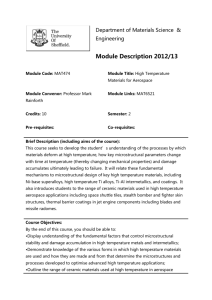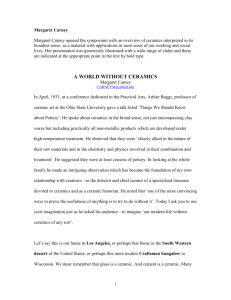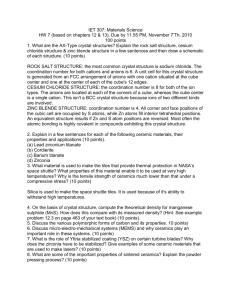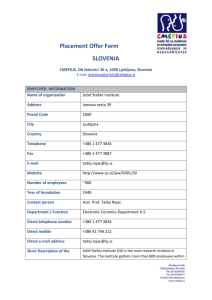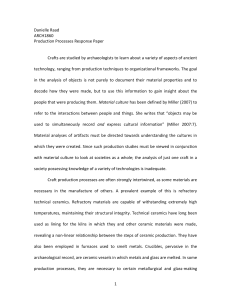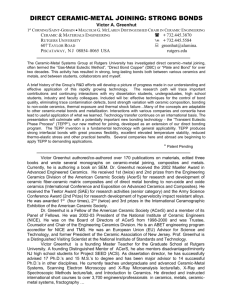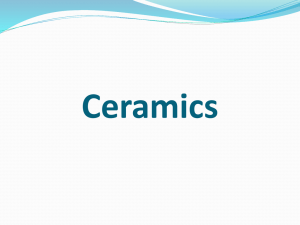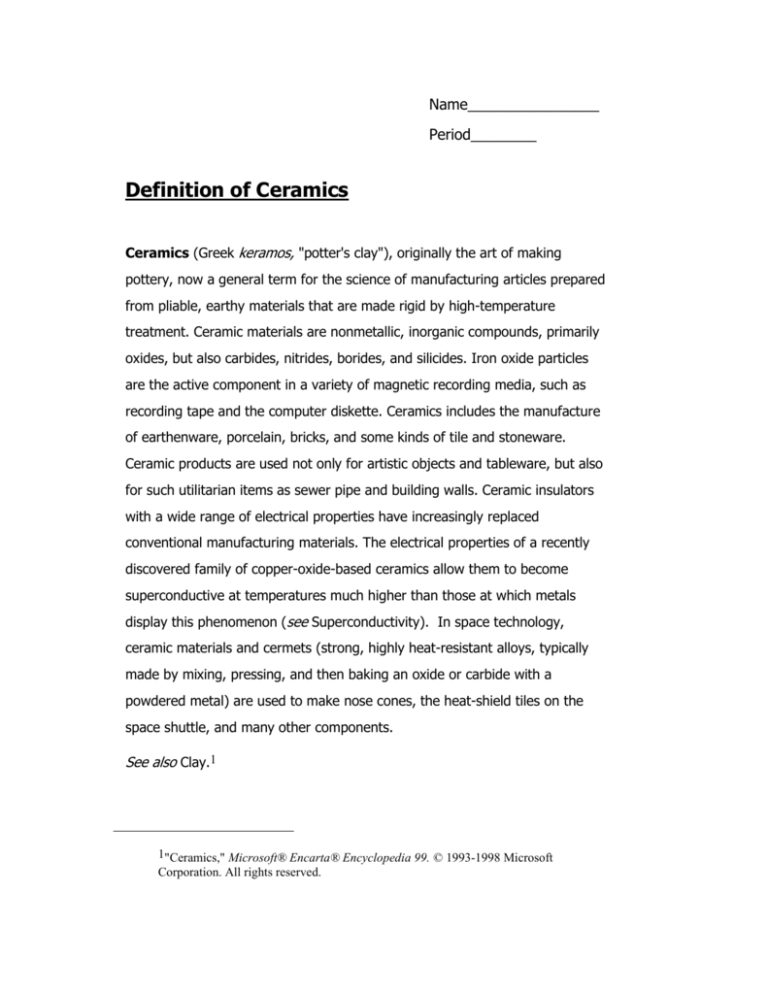
Name________________
Period________
Definition of Ceramics
Ceramics (Greek keramos, "potter's clay"), originally the art of making
pottery, now a general term for the science of manufacturing articles prepared
from pliable, earthy materials that are made rigid by high-temperature
treatment. Ceramic materials are nonmetallic, inorganic compounds, primarily
oxides, but also carbides, nitrides, borides, and silicides. Iron oxide particles
are the active component in a variety of magnetic recording media, such as
recording tape and the computer diskette. Ceramics includes the manufacture
of earthenware, porcelain, bricks, and some kinds of tile and stoneware.
Ceramic products are used not only for artistic objects and tableware, but also
for such utilitarian items as sewer pipe and building walls. Ceramic insulators
with a wide range of electrical properties have increasingly replaced
conventional manufacturing materials. The electrical properties of a recently
discovered family of copper-oxide-based ceramics allow them to become
superconductive at temperatures much higher than those at which metals
display this phenomenon (see Superconductivity). In space technology,
ceramic materials and cermets (strong, highly heat-resistant alloys, typically
made by mixing, pressing, and then baking an oxide or carbide with a
powdered metal) are used to make nose cones, the heat-shield tiles on the
space shuttle, and many other components.
See also Clay.1
1"Ceramics," Microsoft® Encarta® Encyclopedia 99. © 1993-1998 Microsoft
Corporation. All rights reserved.
Mosaics, works of art of surface decorations, composed of variously colored small
pieces of glass, stone, ceramics, or other materials. Although mosaic decoration is
most frequently found on floors and wall and ceiling surfaces, closely set colored
components, or tesserae, may also be applied to sculptures, panels, and other
objects.2
Enamel (art), vitreous substance fused by heat to objects of metal, ceramic, or glass.
Enamel fused to ceramic or glass is called glaze. Enamel may be used on decorative
objects, such as jewelry or vases, or on industrial products, such as bathtubs and
kitchenware. It is chemically identical with glass, consisting of a mixture of silica (from
quartz or sand), soda or potash, and lead. These ingredients are usually made opaque
by adding other metallic oxides. Commercial oil-based paints that dry with a shiny,
glasslike finish are also called enamel. This article deals with enamel on metal as an art
form. For a discussion of enamel on glass or ceramic, 3
2"Mosaics," Microsoft® Encarta® Encyclopedia 99. © 1993-1998 Microsoft
Corporation. All rights reserved.
3"Enamel (art)," Microsoft® Encarta® Encyclopedia 99. © 1993-1998 Microsoft
Corporation. All rights reserved.


